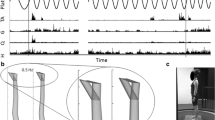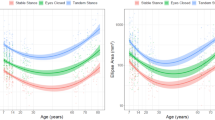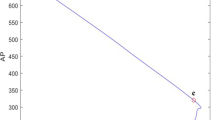Abstract.
This longitudinal analysis confirmed a non-monotonic pattern of postural control development in children from age 5 to 8 years suggested by previous cross-sectional studies. Postural control was considered in terms of control strategy and its variability operationalized by mean and standard deviation of center of pressure (COP) velocity; and of effectiveness and its variability operationalized by mean and standard deviation of COP anteroposterior (a-p) excursion. Periods of significant variability were used to indicate behavioral transitions. Seventeen healthy children (nine males, eight females) aged 5–6 years (61.5–75 months) were tested at 3- to 4-month intervals up to age 8 years (83–97 months) in eyes-open quiet stance on a force platform for 30 s in each of ten trials. Data were reorganized into six developmental categories based on adjacent test dates prior to (–1) and after (+1, +2, +3, +4) a subject's trial with the lowest COP velocity (0). Developmental category is proposed to represent level of sensorimotor integrative skill. Within-subject ANCOVAs revealed a significant effect (P<0.0001) for developmental category with covariance due to height, weight and actual age removed. Post hoc tests showed a significant effect (P<0.0001) on measures of strategy. However, differences in COP velocity (type of strategy used) and differences in its variability (denoting a transition between strategies) were not always coincident. Performance outcome (COP a-p excursion) changed near linearly across categories. It was concluded that a non-monotonic change in control strategy as indicated by COP velocity describes the development of quiet stance equilibrium. A transition occurs from a primarily open-loop to incorporation of open- and closed-loop components of control. Honing of strategy used precedes and follows transitions. Constriction of velocity and excursion may typify the early stages of bimodal strategy. Developmental categories describe affiliation with the strategy employed and may represent differentiable levels of sensorimotor integrative skill. They may be more useful in assessing progression of equilibrium control than consecutive age in years.
Similar content being viewed by others
Author information
Authors and Affiliations
Additional information
Electronic Publication
Rights and permissions
About this article
Cite this article
Kirshenbaum, N., Riach, C. & Starkes, J. Non-linear development of postural control and strategy use in young children: a longitudinal study. Exp Brain Res 140, 420–431 (2001). https://doi.org/10.1007/s002210100835
Received:
Accepted:
Issue Date:
DOI: https://doi.org/10.1007/s002210100835




